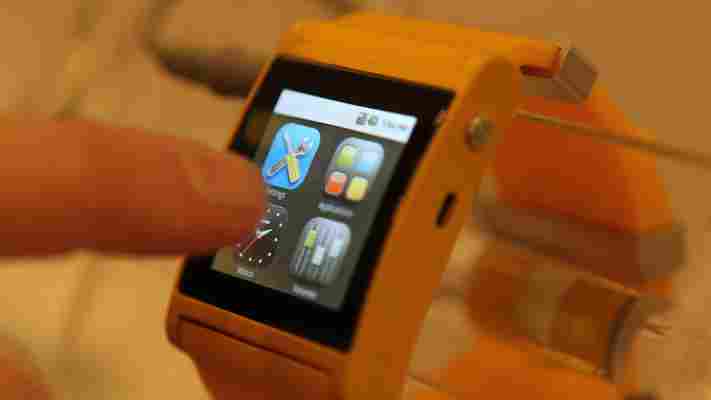Although Microsoft may have never intended to become a hardware company, it has quietly grown into one in many ways, from the constantly evolving peripherals it creates to the popular Xbox entertainment center.

And while the Xbox hails from a different division, “Microsoft Hardware” itself has recently turned 30, and to celebrate, we’re traveling back in time to peek at some of its work — the good (pretty and new) and the bad (ugly and old). From the 1983 goofy (and rather heavy) Microsoft Mouse and the 1994 Philippe Starck experiment to the surprisingly comfortable Arc Touch Mouse and similarly named Touch Mouse, here are the highlights:
1983: The Microsoft Mouse is born.
1999: Microsoft introduces the first optical mouse products.
2004: Microsoft Hardware and designer Philippe Starck create Microsoft’s first designer mouse.
2010: The Arc Keyboard, weighing in a less than one pound.
2010: Microsoft introduces LifeCam Studio with a 1080p HD sensor.
2010: Microsoft introduces the Arc Touch Mouse, which flattens for portability and pops up for comfort.
2011: Touch Mouse is Microsoft’s first multitouch device designed for Windows 7.
Now, Apple fans, don’t think I’ve jumped ship, but here’s something to keep in mind: Apple products are drop dead gorgeous, but when it comes to things like keyboards and mice, Apple has a history of pretending ergonomics aren’t necessary .
Honestly, though this isn’t the sexiest topic, Microsoft has been schooling Apple at this from the get-go, as have countless other 3rd parties over the past few decades. Especially for power users and professionals stuck behind a computer all day (ahem, us), this stuff actually matters — anything that delays the fast approaching carpal tunnel syndrome is a good thing.
All in all, regardless of your thoughts on either company, Microsoft’s hardware department is getting a nod today for 30 years of work. Okay? Deal with it.
➤ 30 Years of Microsoft Hardware (the full list)
Written on my Macbook Pro
The i’m Watch is an attractive, developer friendly smartwatch with a speed issue [Video]
The i’m Watch is a device that looks like a cross between an iPod Nano and a high-end digital watch. The i’m falls into the rapidly expanding crevice of devices called smartwatches.

The i’m Watch, which tethers to your smartphone or tablet, can use its various installed apps to pull down email, stock quotes, play music and more. The device is compatible with Android and iOS (and presumably Windows Phone) devices as it uses a web interface for registration and app management, rather than an app.
We took a closer look at the i’m Watch at CES 2012:
The design of the watches we saw on display at the booth was pretty darn solid. They feel good in the hand, the bands and clasps are sleek and they come in a variety of flavors from sporty to bejewelled.
The response time of the Android 1.6 OS on the small 1.5″ 240×240 TFT screen frankly wasn’t the best, and while not many items took two stabs or swipes, it wasn’t anything like what you’re getting from your preferred smartphone.
Hopefully those issues can be improved, because we liked what we saw in the i’m Watch. the representative we talked to was very open about the hopes it had for what developers would do with the open API and web app framework.
The i’m Watch hasn’t been announced formally for the US as of yet, but there was a CES reference price of $299 in effect so you can expect it to be around there when it is launched.
Polaroid launches a ‘smart-camera’ running Android. But who’s going to buy it?
Since the demise of the Polaroid’s instant photography , we have been waiting with baited breath to see what the company is going to do next. A few days ago it launched the GL30 camera , the perfect combination of digital and retro, allowing users to shoot and print their photos on the go with one device.

The latest Polaroid offering is far more confusing, and dare I say, pointless. The Polaroid SC1630 is a digital camera, powered by Android, has a 3.2″ touchscreen, Wi-Fi connectivity, and geotagging. So basically, it’s a cameraphone without the phone.
The only advantage the SC1630 has over its smartphone counterparts is optical zoom. Even the 16 megapixels offered by Polaroid can be matched by the HTC Titan II, which we took a look at here . So is optical zoom enough of a pull to encourage users to carry 2 devices? I don’t think so.
Polaroid’s move comes across as confused, trying to break into a market, but coming in from an entirely wrong angle. If I’m going to shell out the rumoured $299 on an Android enabled camera, why wouldn’t I want a phone to go with that price tag?
In fact, when you take a closer look at the announcement’s fineprint, you’ll see that “cellular data connections” are optional, and Computerworld is reporting that you’ll be able to “make the occasional phone call” using the device.
Without the phone, it’s a digital camera which looks and runs like a smartphone, giving users access to all of the camera apps currently available in the Android App Market. With the phone – well then it’s a smartphone.
Polaroid appears to be caught up in something of a chicken and egg argument with itself. Is it a camera-phone or a phone-camera? They’re placing the emphasis on telling the consumer how to use the product, rather than focusing on what the product can actually do.
Attempting to convince an Android user to carry both an Android-powered phone and an Android-powered camera seems pretty futile, and the same can probably be said for any iPhone user out there.
With the phone option, it’s a smartphone with an optical lens. Now that is a pitch that I’d be far more interested in hearing about. One that would have users trading in their iPhone or Android handsets in favour of a Polaroid smartphone. Imagine a smartphone loaded with camera apps developed by a company that knows quite a bit about photography, and vintage photography at that. If anyone can give Instagram a run for their money in the vintage photography scene, it just might be Polaroid.
